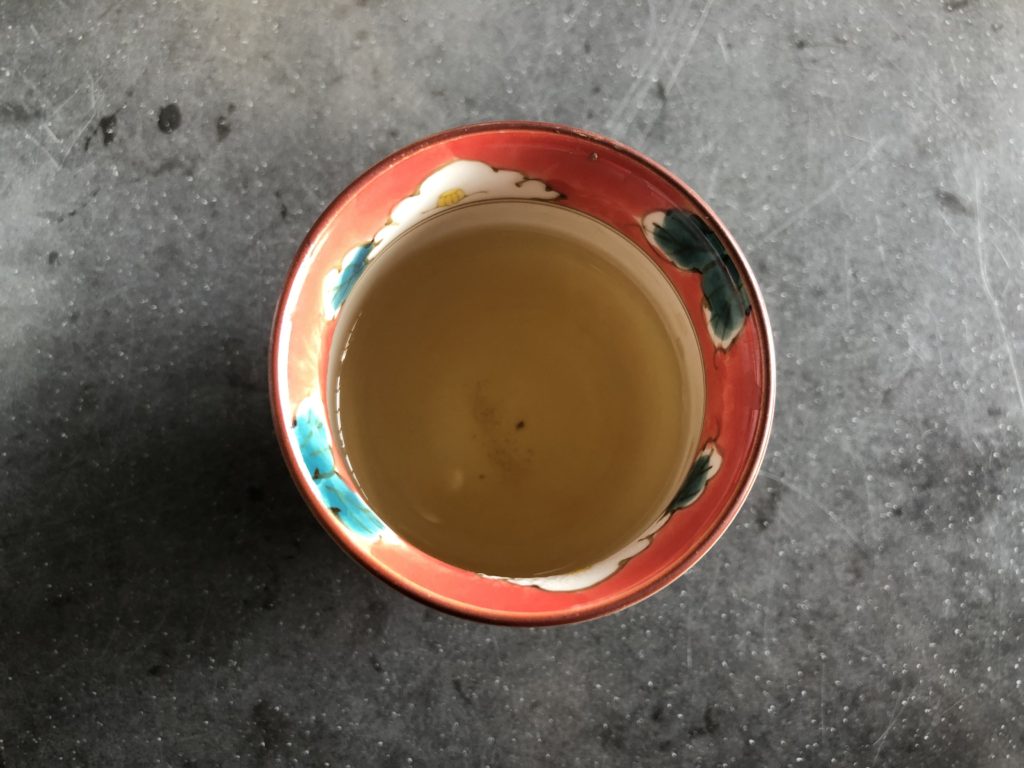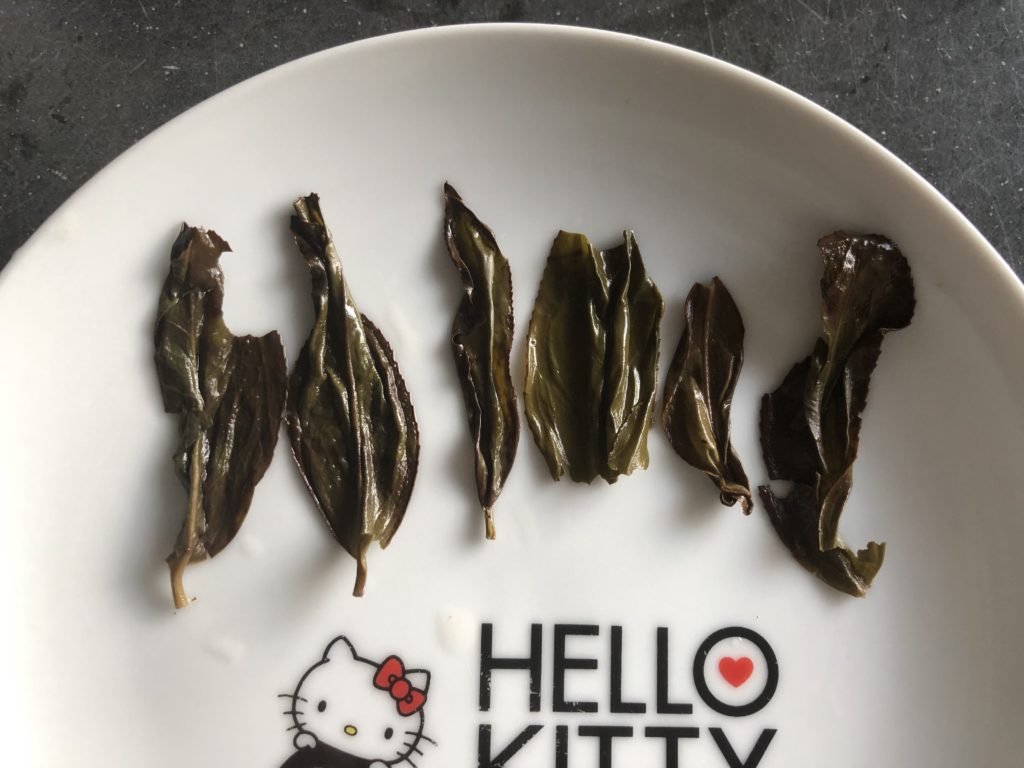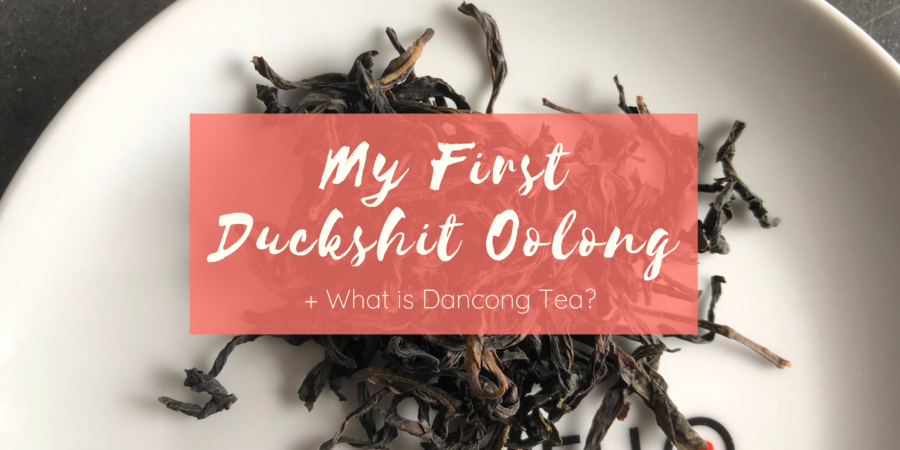Cher and I did our first group tea buy recently! Cher has quite a few suppliers that she gets tea from – what this means is that while her cost of tea per 100g is pretty cheap, the overall amount is pretty high because she has to buy a minimum amount of tea. But since we wanted to buy quite a few teas, we decided to look for other tea lovers and do a group buy. It was successful and I managed to try my first tea – a duck shit oolong!
I’ve been wanting to try this tea ever since I heard about it. It’s got a great origin story. The most detailed one I’ve found goes like this: The original duck shit tea tree was an ancestral tree planted in “duck shit soil” (which is apparently yellow soil). Because the tea was so strong, people asked about it. Fearing theft of the plant, the farmer said it was “duck shit oolong” to try and dissuade people from buying it. But eventually, cuttings from the plant was obtained and Duck Shit oolong plants spread throughout the Phoenix Mountain area [1].
But before I go into my experience with Duck Shit Dancong, a little introduction to Dancong:
What is Dancong?
Googling what dancong is was surprisingly tricky. While it’s romanised as “dancong”, there are actually two words for “cong” in Chinese [2]: 丛 and 枞. Luckily for me, this is a problem other Chinese-speaking people have and I managed to find two articles about the history of the word. According to the first one [3] I found, this 枞 refers to a type of tree, while this 丛 can refer to a cluster of leaves or trees and from there, referred to leaves from the same tree. There are other arguments for and against either word, but this other article I found [4] seems to say the same thing with regards to the meaning of the word.
And this ‘cluster’ meaning is actually pretty important to understanding what Dancong is. As the Baike entry puts it: “历史上是“单株采制”的特定名称” (Historically, this is specially designated name for teas made with “single plant harvesting”) [5]. As you can tell, one of the key characteristics of Dancong is that each batch is made from one plant (or one cluster of plants, given that 丛 can also refer to a cluster of tea trees). To be even more specific, these tea plants are from the Phoenix mountain in Guangdong.
In terms of oxidisation and broader tea categories, Dancongs are a type of oolong. I’ve never given much thought to the type of oolongs that exist, apart from the fact that different oolongs have different oxidisation levels, but according to an article on Chayi [6], there are three “important” types of oolong: Wuyi Yancha (rock tea), Anxi Tie Guanyin, and Dancong.
The Different Phoenix Dancong Scents
I found this great article from Tuzichi [7] that summarises the scents of Phoenix Dancongs. Basically, the aromas of Dancongs resemble the natural aromas of flowers and can be divided into about twenty types. The article goes into a lot of detail about the tea (colours, etc) but I just want to highlight the ten types of dancong in the article before this post becomes too long:
- Yellow Branch: from the Song dynasty, so named because it resembles yellow tea. It’s said to have been grown for more than 600 years and is the highest altitude tree.
- Zhilan (Orchid): Includes the eight immortals dancong, bamboo dancong, and others. The article uses the bamboo dancong as an example – it got its name because its leaves look like bamboo leaves.
- Milanxiang (Honey Orchid Scent): Includes the golden leaf dancong. Obviously, it got its name from its unique scent, which resembles an honey orchid. This is another tea from the Song dynasty.
- Guihua (Osmanthus): The trees that produce this tea are about 280 years old! Not as old as some of the other dancongs but still pretty venerable to me.
- Magnolia: The leaves of the tree are yellow-green (and seen as gold by the farmers) and it has the natural scent of magnolias.
- Ginger Flower: I’ve actually never heard of this, so the idea of tea with the natural flavour of ginger is pretty interesting to me! This is grown in Zhongping village.
- Yelaixiang (Night is coming fragrance): This is a really poetic name but basically, it’s supposed to smell like the ‘water scent’ that flowers emit at night. These trees are about 300 years old.
- Almond Scent/Duck Shit: The tea that I’m trying to day! According to the Tuzi article, the ancestral tea plant is from the Wuhua mountain.
- Rougui (Cinnamon): A very famous oolong, this tea has a scent similar to the TCM cinnamon.
- Jasmine: There are jasmine green teas where the flowers are layered in the teas to scent it, but this is supposed to be a naturally jasmine-scented tea! A pretty young dancong, this one is about 150 years.
The article also talks about storage methods, but it gives the standard advice. Either:
a. Store it in an airtight container, or
b. Store it in non-porous food grade bags.
This shouldn’t be new to people who are used to storing tea.
First Taste

The dry leaves smell woody and floral, with a pretty distinctive roasted notes. The leaves are twisted, not balled.

Brewed, the tea has the same fragrance. So interesting fact: for some reason, I mix up floral and roasted quite easily – I didn’t actually notice the floral notes until it was gone, and I realised that what I was thinking was just roasted notes (like the kind in genmaicha) was actually roasted and floral notes. Just goes to show that I need to taste a lot more teas!
The tea itself had a pale yellow liquor and was sweet, but not extremely so, with strong floral notes that lingered in the mouth. There is some bitterness, but just the right amount, and it had a very ‘liquid/water’ type of mouthfeel, if that doesn’t sound too weird. The first three brews were amazingly flavourful and I really loved it.
On the fourth steep, the bitterness was more pronounced, especially towards the back of the tongue. It was actually more like a feeling than a taste, which was a bit unique. By the fifth steep, the bitterness and astringency was much more pronounced (though not unpleasantly so) and the sweetness and floral notes were reduced. I also tasted what seemed like woody notes in the tea. It was almost as though the first few steeps were lively and full of energy, while the later steeps were more settled and had quietened down. It’s definitely very interesting watching the tea change through steepings and I wish my caffeine tolerance was high enough to go further!

After my experience tasting Tie Guanyin, I decided that I wanted to start looking at the wet leaves too! The leaves here feel thinner than the Tie Guanyin and actually looked pretty green, contrary to my initial impression of the dry leaves. In my first brewing, the leaves were about 30% broken, which was a bit of a cause for concern. But I checked with my friend who bought the same tea (we split) and she said hers were mostly whole. So I made a second round of tea the next day to check out the leaves again:

The leaves in the second round were mostly whole, so my theory now is that I mishandled the first round of tea and caused some of them to break (there was a brewing accident and I had to change pots). They are pretty thin after all, so it makes sense they would break easily.
Naturally, I can’t drink so much tea so I had a lot of fun sharing my tea with others! Plus, the tea was extremely well-received, which made me happy. My dad said that it was one of the strongest oolongs he’s drunk and ended up drinking my mother’s cup. Other remarks from people who like oolongs but hadn’t tried it before included the fact that it was very smooth and that they “loved it”, so I think this is a pretty good tea to introduce to people who like oolongs and want to go further!
Notes
[1] Information from 奇葩茶品鸭屎香,以至俗之名,登大雅之堂
[2] And I’m stubborn in the sense that if I’m drinking a Chinese or Japanese tea, I prefer to do the research in Chinese or Japanese wherever possible. I know that there are great English articles out there, but I like to check against what people in China and Japan are saying.
[3] Article: 潮州凤凰茶,是单丛还是单枞?你写对了吗?
[4] Article: 单丛还是单枞?单枞还是单丛?竟然99%的人傻傻分不清楚!
[5] The Baike article. I also found another Baike article using the other character for Dancong in the article written by China Science Communication, but that seems to focus more on the characteristics of Dancong tea trees.
[6] Article on Chayi: 单枞茶和乌龙茶有什么区别
[7] Literally translates to “Rabbit East”. Link to article (in Chinese). The article goes into much more detail than my summary so I would recommend reading it in full if you can read Chinese!
